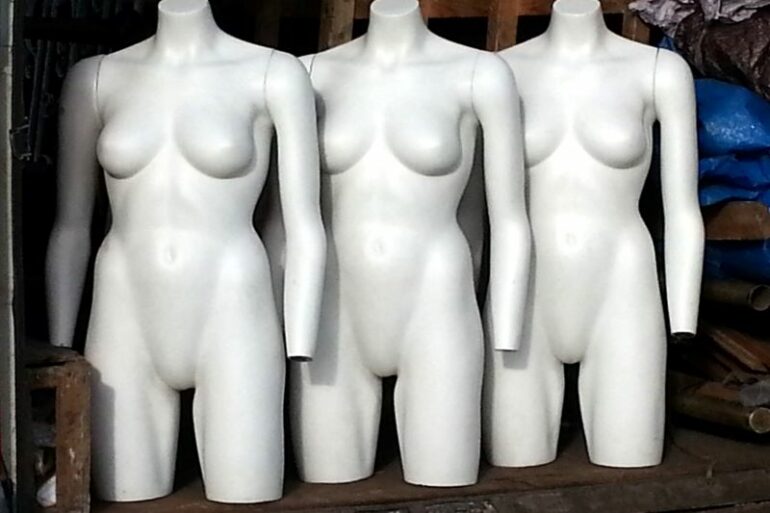Content warning: This article deals with sensitive content such as rape, violence and abuse.
Women. Sex. Desire. Disappointments. Alienation. Lisa Taddeo’s debut Three Women uncovers the unmet needs and desires of women. While the book succeeds in giving women the agency and voice they deserve, it falls short in diversity and literary artistry.
By Gülşin Çiftçi
A friend of mine, who gifted me Taddeo’s Three Women while I was buried in research for a project on marginalized sexualities, called it »the contemporary book on female desire.« Very motivated by this generous commentary, I read it at the first opportunity. However, when I arrived at the last page of the book, I was very much confused and somewhat disappointed. I was not sure whether it was that »the« that had excited my anticipation, and consequently had me go into a nosedive, or whether it was the intervowen feeling of appreciation and disapproval for what it did and how it did it. Reading the first-hand experiences of women whose voices were unclouded was and is reason for appreciation, but the apathetic depictions of sexual abuse, violence, as well as the lack of diversity exasperated me deeply.
When Lisa Taddeo first started working on her debut Three Women, she wanted to explore human desire, and expected to be »… drawn to the stories of men. Their yearnings. The way they could overturn an empire for a girl on bended knee.« It was not long after, that she discovered that their stories ended »in the stammering pulses of orgasm,« which she found to be just the beginning for women involved in these very stories told by men:
Whereas the man’s throttle died in the closing salvo of the orgasm, I found that the woman’s was often just beginning. There was complexity and beauty and violence, even, in the way the women experienced the same event. In these ways and more, it was the female parts of an interlude that, in my eyes, came to stand for the whole of what longing in America looks like.
It was only then that Taddeo decided to shift her subject matter to women and their desires, finally to her three women—Lina, Maggie, and Sloane. Following the tradition of Adrian Nicole LeBlanc and Katherine Boo, Lisa Taddeo mixes together long conversations, observations, and official records to make this book as real as possible. She spent »thousands of hours« with these women—»in person, on the phone, by text message and email.« In the manner of a dedicated investigator on a mission, she changed towns, moved to a different state only to be able to meet, live with them.
Taddeo wanted to bring out the unspoken truths about women and desire. Women and their desire. She chose, as she writes in the introduction to Three Women, her women for their honesty and openness, and willingness for being the voice of their own stories. Today, two years after the #metoo movement, we witness a boom in the literature that writes, praises, investigates, and depicts women’s sexuality from every possible angle. Therefore, Taddeo’s Three Women could not be timed any better.
Taddeo starts the book with the story of her own mother who was incessantly followed by a man to and from work—a man who masturbated to her body in the shadows of the streets. We now know that this is not a unique example that happened only to Taddeo’s mother, that this is not something that could only have happened decades ago, and that there is someone we know, maybe even ourselves, who was nonconsensually masturbated at. The excruciating commonality of this act raises one question: Why is Taddeo telling us this story? She writes:
My mother let this man masturbate to her body, her face, on her walk to work and on her walk back. She was not the type of woman to take pleasure in this. But I can’t know for sure. My mother never spoke about what she wanted. About what turned her on or off. Sometimes it seemed that she didn’t have any desires of her own. That her sexuality was merely a trail in the woods, the unmarked kind that is made by boots trampling tall grass. And the boots belonged to my father.
Does Taddeo tell us what this says about women’s desire? No. Does she talk about the de-sexualization of mothers by their children, husbands, their families, and by society? No. These topics are left hanging. Taddeo presents the stories of three women for the rest of the book in a similar fashion, without further ado.
The Three Women
Lina, an Indiana housewife in her thirties, was drugged and raped by three school mates which gave her the reputation as the girl who had »fucked three guys in one night.« She is now married to a man for more than a decade who refuses to touch her, to kiss her. A frustrated woman who wants her body, her skin, her mouth to be loved, which is something her husband refuses to do. She reconnects with her first love, who is married and has kids by now, and soon after seeks a divorce from Ed. Their affair is sensual, lustful, passionate, and extremely magnetic, exactly the opposite of her physically neglecting and unsatisfying marriage.
Maggie, a young woman from North Dakota, is in her early twenties. She was marginalized by friends and family for having had an affair with an older man. She had no one left after this incident became public at school; neither her best friends were on her side nor did she have the support of her sister and mother. She confides in a letter to her English teacher Mr. Kondel that, while on vacation in Hawaii, she had lost her virginity to a military man. He was 15 years older than her, and she had found it exciting. This letter marks the beginning of her friendship with Mr. Knodel. Not so long after, their »friendship« was turned into an affair that Maggie was »willingly« drawn into. After the affair ended, she became depressed, repeatedly dropped out of college, and was heavily medicated. At twenty-three, soon after Mr. Knodel was awarded as The Teacher of the Year, she decided to report what had happened to the police.
Sloane is, as Taddeo describes her, a beautiful, accomplished woman in her forties, who is aware of the power of her beauty. She, with her husband, owns a restaurant on the East Coast and is financially well-off. Sloane sleeps with men, sometimes with women, picked by her husband, Richard. The setting is not always the same, she sometimes has sex with another person in front of him, sometimes alone where she records the interactions, or while having Richard on the phone during sex with the third partner. While describing the couple’s sexual life, Taddeo writes that »If you were to liken their sexual life to a dinner table, the table itself would be long and thick, decorated with antlers and other bones and flowers.« While Richard and Sloane are the co-hosts of this rich dinner table, Sloane alone will have to deal with the after-mess of their feast, and be subjected to public shaming.
Whose Desire?
What troubles me the most is that the book is terribly non-diverse. Taddeo, in the epilogue, explicitly states that »even when women are being heard, it is often only the right types of women who are actively heard. White ones. Rich ones. Pretty ones. Young ones. Best to be all those things at once.« And I can’t help but wonder whether Taddeo was, or is, aware of the obtrusive irony her words reveal about her own book.
The three women are exclusively white and mostly heterosexual, and their age range from 16-40s—too narrow to be touted as a groundbreaking representative work on female desire. If this choice was made, then one wonders whose desire is uncovered here. How about women of color, for example? Or queer women? Women, who desire non-normative sexualities? We are, by now, weary enough of the featuring of normative bodies and their almost exclusively normative desires. To take this particular selection of women as a representative of female desire in America is to deny the diverse bodies and desires that populate the country.
Reverting the Male Gaze

Lisa Taddeo
Three Women
Bloomsbury Circus: London 2019
320 pages, 18,90€
Even though the book starts with the sharp and clear statement that »This is a nonfiction book,« Taddeo walks a thin line between fictional prose and reportage by not committing to either one of the two. The book is narrated in the third person and reads like a very long newspaper article, at times even like a novel. Taddeo cherishes the female point of view in the stories; »Others lack a distinct voice in this text because these stories belong to these women,« Taddeo writes in the Epilogue. »It is these three specific women who are in charge of their narratives. There are many sides to all stories, but this is theirs.« While this is the first time that we read these three women’s stories, we are familiar with them even before having read them—relatability to their experiences is a significant feature of the work.
Taddeo, by not interfering in their stories, highlights the interiority of her subjects, the intensity of their feelings, experiences, and memories. What I found very successful is the decision to bring forward the three women’s voices as they are. At times raw, imprecise, even ugly. Truth is ugly. We all do, and should, remember Brock Turner, and how the media coverage was dominated not only by men’s points of view in the general sense but also fixated on the rapist’s depiction as the successful swimmer.1Brock Turner was caught in the act of committing sexual assault on an unconscious woman behind a dumpster. After the case received large media attention, Brock Turner’s mother wrote a letter, in which she »asks for sympathy for her son, never mentions victim once.« Even after »he was convicted on three counts related to sexual assault,« many article headlines refered to Turner as the »Stanford Swimmer.« As a response, headline re-makes were widely circulated to protest the media coverage of this case and their language, criticizing the reluctancy of calling Turner a rapist. In Maggie’s story, The Teacher of the Year does not face any charges for pedophilia, for sexual abuse, for using his position of power as a teacher. Sounds familiar?
Familiarity, Relatability and Dissociation
All three women have stories that are »relatable«, as Taddeo claims them to be, and they all have faced the disapproval of their society. The book highlights the universality of shaming and the oppression of women’s desires, and sexualities. The unfolding of the three women’s stories exposes the way women treat each other, which is perhaps even more important than revealing something new about male dominancy. As Taddeo writes in her prologue, »it’s women . . . who have a greater hold over other women than men have. We can make each other feel dowdy, whorish, unclean, unloved, not beautiful.« We see this when both Maggie and Lina are slut-shamed, and when Sloane is held responsible for the pain caused by a deceiving husband. These women were isolated and made vulnerable not just by men but also by the women surrounding them.
Perhaps this is why Taddeo seeks no further explanation, provides the reader with no further commentary other than the three women’s words. Women have been judged for both the rights and the wrongs on the path of following their desires, and Taddeo’s lack of commentary can be read as a reaction to these judgments. In contrast, as Taddeo refrains from judging her subjects, the women’s unadulterated voices judge the society that usually condemns them. Remarkable as it is, this decision causes a sense of discomfort, as the book ends with many unanswered questions that haven’t yet been asked and many sentences that haven’t yet been uttered. What we have in hand is three, carefully detailed stories with no implication as to why these stories, why now. It is an account of sexual abuse, misuse of power, hypocrisies of heterosexual marriage, psychological scarring resulting from sexual abuse can leave, gender inequality, the objectification, the loneliness, and the alienation of the victim, a conspicuous lack of sisterly solidarity. Three Women confirms the obvious but fails to go beyond it.






